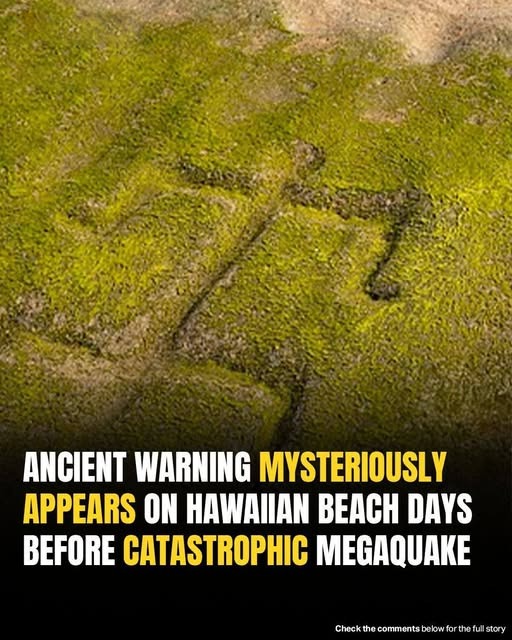In a remarkable turn of events, ancient petroglyphs have resurfaced on the shores of Pōkaʻī Bay in Waiʻanae, Oʻahu, just days before a powerful earthquake struck the Pacific region. The reappearance of these sacred carvings has sparked wonder, reverence, and unease among locals and cultural experts alike.
The petroglyphs, etched centuries ago by Native Hawaiian ancestors, were revealed on July 23 after unusually low tides and soft, retreating waves swept away layers of sand and algae from a massive sandstone boulder. The 26 carvings, stretching across a 115-foot section of shoreline, are believed to date back between 600 and 1,000 years.
These ancient figures, mainly stylized stick-like humans, are carved with remarkable consistency. While their exact meanings remain a mystery, Native Hawaiian cultural practitioners like Glen Kila believe the reemergence is more than just a geological curiosity. “To us, these aren’t just carvings,” Kila said. “They’re messages from our ancestors—warnings, stories, and symbols that tie us to the land, the ocean, and each other.”
Kila interprets the images as signs of environmental upheaval, possibly foreshadowing threats linked to rising sea levels, coastal erosion, and other natural changes. A large figure with one hand pointing skyward and the other downward has captured widespread attention, symbolizing the duality of sunrise and sunset or the balance between heaven and earth.
The timing of the petroglyphs’ return coincides with a powerful earthquake that struck off the Kamchatka Peninsula in eastern Russia, triggering tsunami warnings across the Pacific. Although the waves that reached Hawaii were minor, the event sparked anxiety across the island chain.
While no direct scientific link has been established between the petroglyphs’ reappearance and the seismic activity, the convergence of ancestral imagery and geological unrest has struck a chord within the local community. “It’s not about cause and effect,” Kila noted. “It’s about connection. The carvings remind us that everything is connected—the ocean, the land, the people, and the past.”
As the Pacific continues to shift, the silent figures etched in stone serve as both a mirror of the past and a signal to the future. The petroglyphs remain partially visible, depending on tides and weather, and visitors are asked to observe from a respectful distance to preserve the site’s cultural significance ¹.


